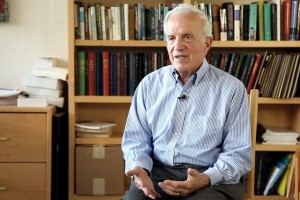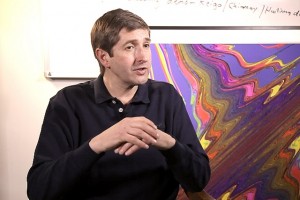Atomic Clocks and General Relativity
Physicist Daniel Kleppner on precise time measurements, gravitational field, and the Global Positioning System
What is the semi-classical regime? Why quantum mechanics should be able to describe any classical motion? How can butterfly flying in Brazil cause a hurricane in North America? Professor of Physics at MIT Daniel Kleppner speaks on revolutionary theories in quantum chaos.
It was believed, that using Newton’s laws one can predict the motions of systems if you know the interactions between them. The idea of the clockwork universe evolved from that. And for simple mechanical systems that’s true, but not necessarily true. It was only appreciated around 1900 by the great French theorist Henri Poincaré, who discovered that there are some systems which are unpredictable; you can’t solve them mathematically, if you try to predict the future mathematically, you’ll find that the system just behaves wildly. Behaving wildly means that if you change the initial conditions of the system, you’ll get a totally different answer. For well-behaved systems if you change the conditions a little bit the motion will be a little bit different. He discovered systems for which if you change the initial conditions a little bit the motion is totally different.
Atomic physics is the subject of atoms, microscopic atoms, not global weather systems or mechanical systems. But it does raise a question – “how do atomic systems behave in conditions where the classical motion will be chaotic?” By the classical motion being chaotic one means that one is looking in the realm of atomic phenomena at very high quantum numbers, where the Bohr’s correspondence principle says that the motion should reflect the classical motion at that point, that there should be a natural connection between quantum and classical motion when you deal with the very high quantum numbers. He used that principle, the correspondence principle, to develop his theory for the hydrogen atom in 1913. It’s a very powerful theory.
Even when systems are totally chaotic, there are some motions in system that are periodic, that occur over and over again. We looked and we found that, indeed, you can see these periodic orbits in a chaotic system. If you try to find those orbits using just classical methods you’ll have a very difficult time. Chaotic systems can be very unstable.

Physicist Daniel Kleppner on precise time measurements, gravitational field, and the Global Positioning System

Physicist Ronald Walsworth on quantum mechanical transitions inside atoms, blue and red shift for GPS, and use...

Physicist Daniela Bortoletto on the discovery of the Higgs Boson, the Large Electron-Positron collider, and th...